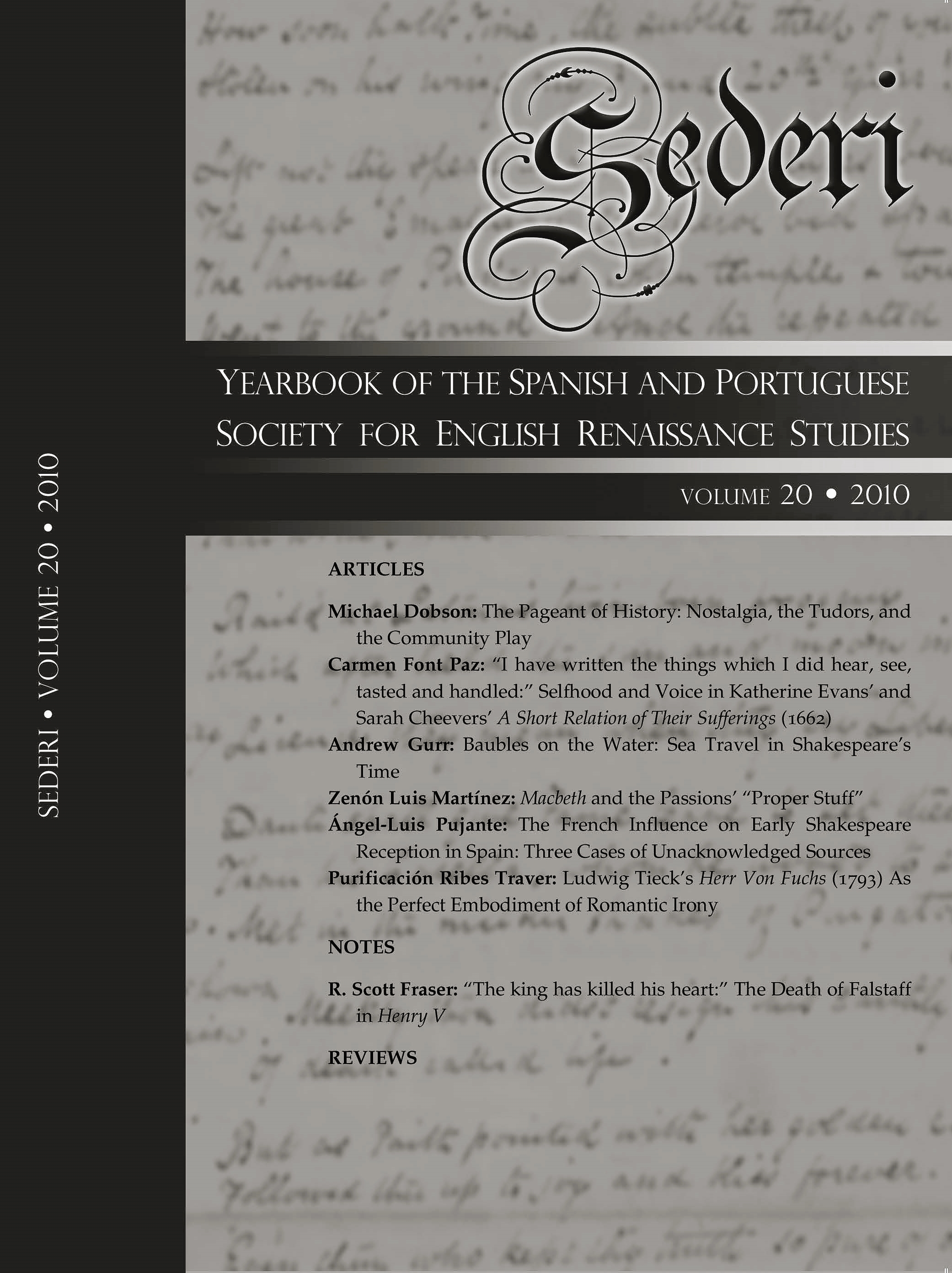Baubles on the Water: Sea Travel in Shakespeare’s Time
Keywords:
Shakespeare, Kyd, water, sea, REED, TaylorAbstract
The technical features of travel by water, on sea and up rivers, are not registered as strongly as it should be in studies of the Shakespearean period. In his great edition of The Spanish Tragedy Philip Edwards mocked the author’s assumption that the Portuguese Viceroy would have travelled to Spain by sea rather than overland, since the play also notes that the two countries have contiguous boundaries. He did not know how tortuous travel overland from Badajoz to Lisbon could be. A similar ignorance of the routine use of travel by boat around the coast of England and up its main rivers is evident in the studies of playing company travels in the many Records of Early English Drama. Its editors take too little notice of the likelihood that the professional playing companies using London’s shipping to carry their personnel and properties on their journeys round the country. The official records of the Privy Council and other state papers show how important access by river was for all bulk transport through England’s rivers.
Downloads
Downloads
Published
Issue
Section
License
The copyright holder of the published contributions is SEDERI.The hardcopy and an open-access version of the journal will be published simultaneously. The issues will be available online in the SEDERI website (http://www.sederi.org/yearbook/) and other repositories that have signed an agreement with SEDERI.
The authors who publish with this journal agree to the following terms:
a) SEDERI retains copyright of the essay.
b) If the author wishes to republish or rewrite the essay for another journal, or include the essay published in SEDERI in their personal repositories, or in any other way, they should contact the editors to obtain permission to do so. This will entail citing SEDERI as the original source and sending the editors a copy of the new version, or the link to the website, in case of online publishing.
The author(s) hereby warrant(s) that:
a) The essay submitted for publication is an original creation and does not infringe any copyright or property right of another journal, author or publisher.
b) The essay submitted for publication has not been previously published, whole or in part, and is not being considered for publication elsewhere.
c) Written permission has been obtained for any material from other sources included in the essay submitted for publication.




